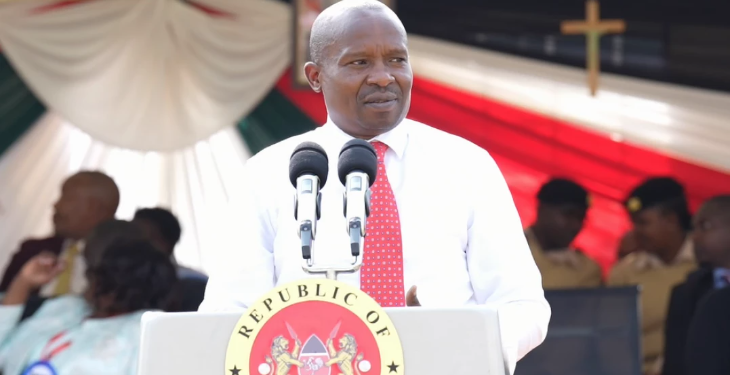A 14-year-old boy who was shot 11 times by police during the anti-Finance Bill protests in Nakuru County a week ago is living in pain as five rubber bullets are still lodged in his body.
Caroline Chepkoech, the boy’s mother, said her son was shot during the June 27th protests as police fired rubber bullets to disperse protesters.
The family of the form one student, who lives in Bondeni Estate in Nakuru East, is now burdened with hospital bills as the young boy nurses life-long injuries.
Chepkoech said doctors failed to conduct surgery to remove the bullets due to the risks of damaging critical organs.
“He is in severe pain; sometimes he just wakes up at night and complains of pain. I just encourage him to persevere since God has done wonders for him already,” she said.

How Police Shot the Boy
According to the mom, her son was in the wrong place at the wrong time. She had sent him in town to collect an asthma inhaler when the protests turned violent.
He recounted being in the pharmacy when the police threw a teargas canister.
He was forced to lie down, and amid the chaos, he got shot by the police. After shooting him, the boy stated that the police ordered him to stand up and go home.
“Niliamka kwenda tao kutafutia mama dawa, kutafuta dawa nikaona gari imekuja wakatutupia teargas nikalala chini wakapata njia ya kunipiga risasi… waliponishoot aliniambia niamke niende nyumbani,” the 14-year-old said.
This loosely translates to: “I woke up to go to town to get medicine for my mom. While looking for the medicine, I saw a vehicle approaching, and they threw teargas at us. I lay down, and they found a way to shoot me… after shooting me, one of them told me to get up and go home.”
“They were not using police vehicles; they just came and started shooting at people,” he added.
Also Read: Safaricom to Pay One-Year Rent, Give Phones to Victims of Anti-Finance Bill Protests
Cost of Maintaining the Wounds & Impacts
The mother said the number of bullet holes in his back is ten, while one passed near his mouth, making it a total of eleven.
“Doctors managed to remove one; there are still five remaining, and he should go to the theatre,” she said.
Furthermore, the family cannot raise the Ksh300 required to have the wounds dressed and to buy medication to ease the pain daily.
“The wounds are still very fresh; if you open them, you will think he was shot right now,” Chepkoech said.
She also explained that her son has not attended school since his right hand was severely damaged by the bullets.
“He has not attended school this week, and he is lagging behind. I cannot promise when he will go back; he can’t even write because the bullets affected his right hand,” she said.
“My son can’t even take food to his mouth with the right hand; he has to use the left hand, which is a lot of work.”
Also Read: Boniface Mwangi Reveals Sponsors Behind Gen Z Saba Saba Event
KNCHR Death & Injuries Data
The Kenya National Commission on Human Rights (KNCHR) reported that at least 39 people have been killed and 361 others injured since the beginning of the nationwide anti-Finance Bill protests in Kenyan, according to
Data from KNCHR indicated that Nairobi leads the number of fatalities with 17 followed by Uasin Gishu that reported 4 fatalities while Nakuru, Kajiado and Mombasa reported 3 deaths each.
Kisumu had 2 deaths during the protests while Laikipia, Narok, Kakamega, Kisii, Siaya, Kiambu and Nandi each has 1 fatality reported.
The Commission also said there were 627 instances of arrests of protestors and 32 cases of involuntary disappearances.
Follow our WhatsApp Channel for real-time news updates:
https://whatsapp.com/channel/0029VaB3k54HltYFiQ1f2i2C











































































